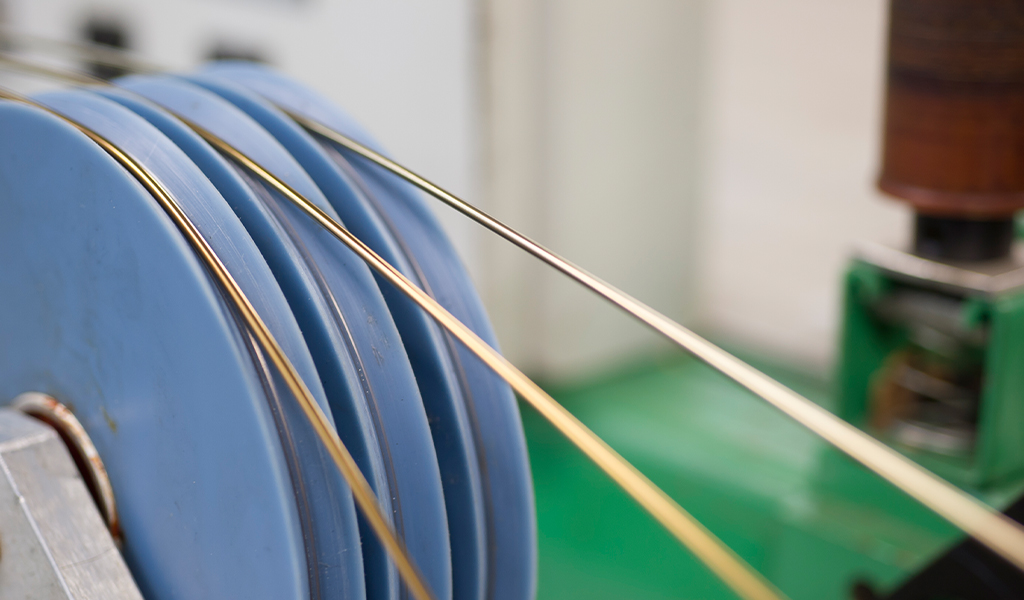The challenge of finding a Nitinol alternative

Fort Wayne Metals is dedicated to pushing the boundaries of materials science, delivering precision-engineered solutions for the world’s most demanding applications. With expertise in advanced wire manufacturing, the company supports industries where performance, reliability, and innovation are paramount.
In this technical blog, Song Cai and Dr. Jeremy Schaffer, along with other contributors, provide insights into the materials, processes, and engineering advancements that drive better outcomes. This post serves as a high-level summary of our technical white paper, distilling key findings and practical applications.
Nitinol has long been the material of choice for medical devices that require super-elasticity. Its ability to recover from deformation without permanent damage makes it essential in applications like stents, guidewires, and orthopedic implants. However, concerns over Nitinol’s nickel content with potential allergic reactions from patients have driven research into alternative materials with comparable properties.
The rise of Ni-free β-Ti alloys
One promising alternative is a Ni-free β-Ti alloy composed of Ti-40Hf-13Nb-4.5Sn (wt.%). This alloy demonstrates large and stable super-elastic behavior at room temperature, a key requirement for medical applications. Unlike other β-Ti alloys that struggle to achieve the recoverable strain of Nitinol, this material exhibits up to 5.3% total recoverable strain at 6% deformation—putting it much closer to Nitinol’s performance.
Key advantages of Ti-Hf-Nb-Sn (THNS) alloy
This Ni-free β-Ti alloy offers several advantages beyond eliminating nickel:
- Comparable mechanical properties: Its mechanical strength and fatigue performance are in the same range as superelastic Nitinol.
- Customizable plateau strengths: Similar to Ni-rich Nitinol, the alloy's performance can be adjusted through low-temperature aging.
- Manufacturability at scale: The alloy has been successfully produced in 100 kg quantities using commercial production lines, making it feasible for industrial-scale applications.
- High X-ray visibility: The presence of hafnium enhances radiopacity, which is beneficial for medical imaging during procedures.
- Biocompatibility and corrosion resistance: These characteristics make it a strong candidate for implants, especially for nickel-sensitive patients.
Overcoming manufacturing challenges
Many β-Ti alloys have struggled with manufacturability due to high heat treatment requirements and oxidation concerns. However, this alloy achieves optimal mechanical properties at lower temperatures (~600°C), reducing the risk of oxidation and making shape-setting more practical. Unlike other high-zirconium β-Ti alloys, which pose ignition risks during processing, this alloy has demonstrated safer large-scale production capabilities.
A substitute for Nitinol?
Despite years of research, no Ni-free β-Ti alloy has been successfully substituted for Nitinol in the medical device industry—until now. With its stable super-elasticity, comparable mechanical properties, and improved manufacturability, this Ti-Hf-Nb-Sn alloy presents a viable alternative for applications such as orthopedic implants, dental devices, and neurovascular components.
As the medical industry continues to prioritize patient safety and material innovation, this breakthrough may pave the way for the next generation of superelastic biomaterials.
For a comprehensive look at our findings, check out the full whitepaper.
Want to discuss how our materials may support your next innovation? Connect with our team!
Categories: Medical device materials, Research & development, Advanced materials

